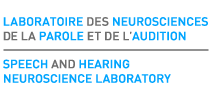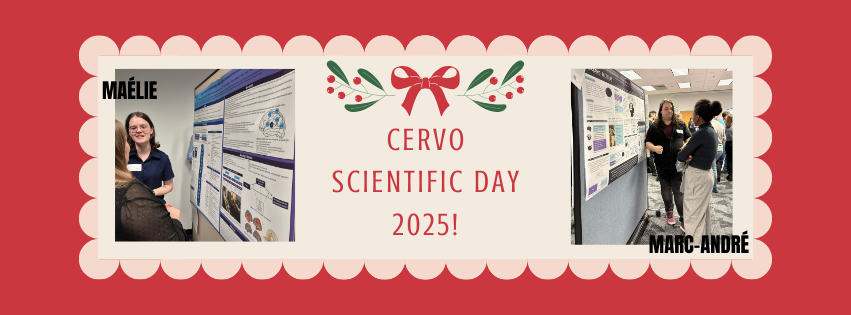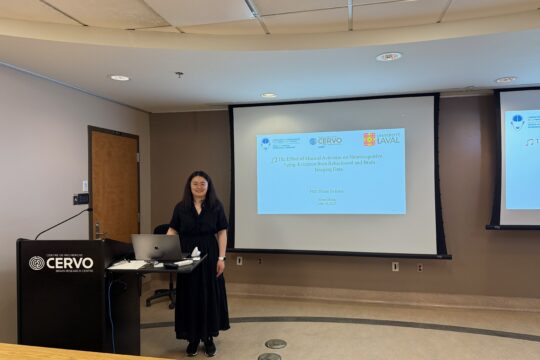An important aspect of our work is the study of voice, speech and resonance, that is, the sensorimotor components of language production, as well as their aging.
To study these processes, the participants in our studies perform various tasks in our soundproof room (Figure 1), which is a special room where ambient noise is very low, allowing for quality recordings of their voice.
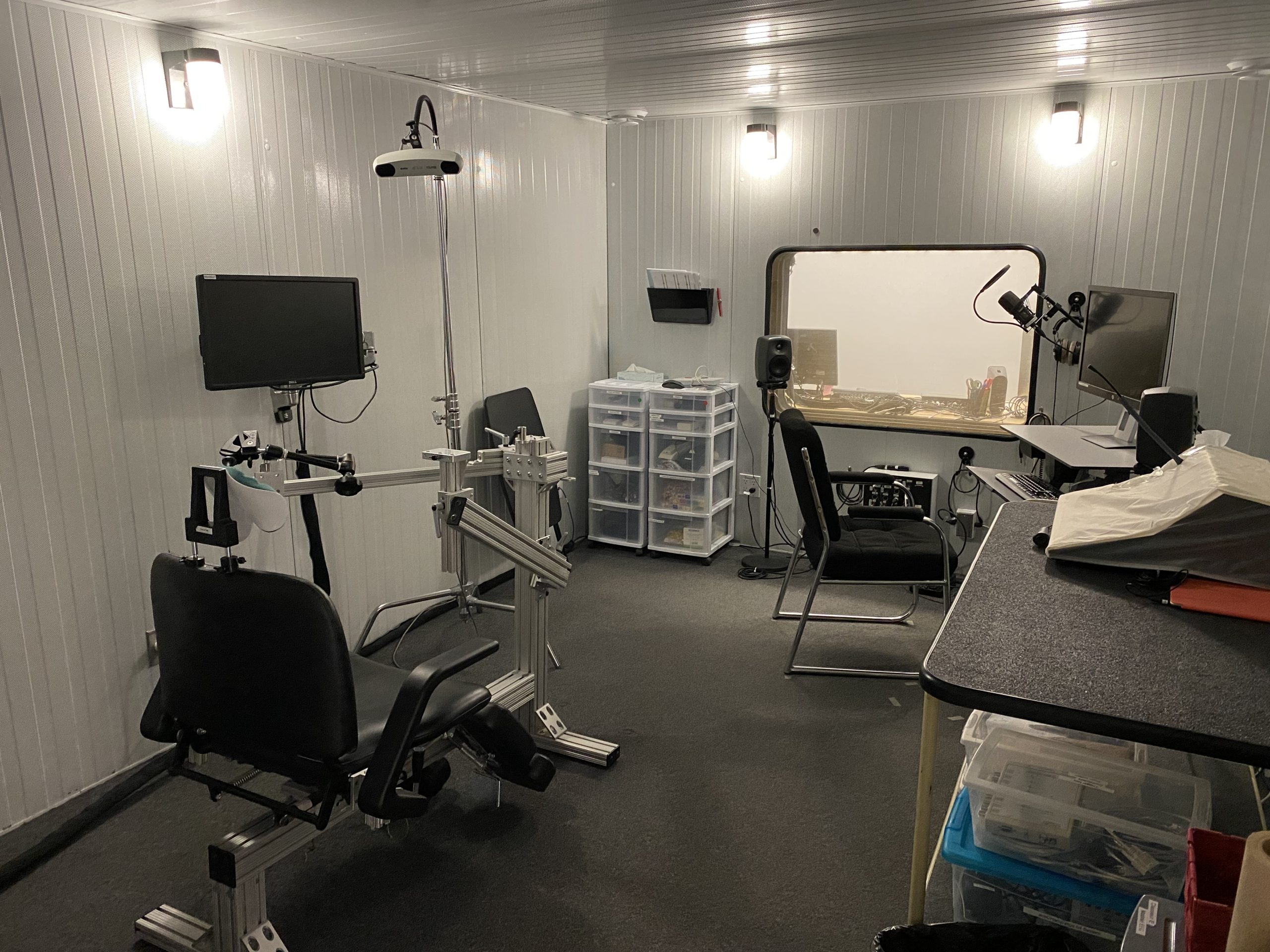
Figure 1. Our soundproof room.
But more specifically, how do we study voice and speech? To fully understand, you must first learn about the basic components of speech. Imagine a trumpet (Figure 2)! Its mouthpiece allows the musician to blow into the instrument by controlling their breathing. The air passing through the folded tube of the trumpet and out of the bell produces sounds—the voice. Blowing in the trumpet is not enough; the trumpet player must also change the positioning of their lips to generate the desired sounds, in the same way that we vibrate our vocal cords to produce our voice. It is called phonation. The more the vocal cords are stretched, the higher the sound will be (i.e., higher pitch); the tighter they close, the louder the sound will be. Voice control requires control over the vocal cords.
Figure 2. Analogy between speech production and sound production with a trumpet.
To produce the consonants and vowels that make up language, we must move our lips, our tongue and the soft palate quickly and precisely, just as the musician must press on the finger buttons of the instrument to create specific notes. It’s the articulation. Finally, to produce a nasal sound, for example “an” (as in the French word “blanc” or the English word “ant”), we have to lower our soft palate and let the air pass through our nose! This is resonance, also called nasalization (Figure 3).
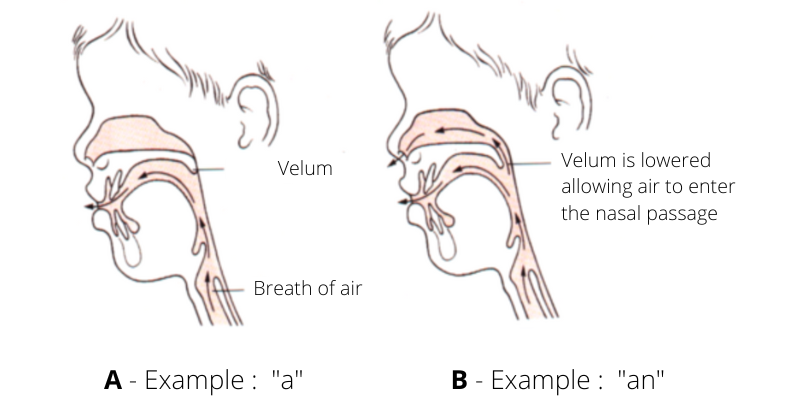
Figure 3. Position of speech articulators to produce the sound A) “a” and the sound B) “an”.
These 4 elements (breathing—phonation—articulation—resonance) are the essential components of speech.
In our projects, we study these components. Here are some examples of tasks that we use to study these process. To measure respiratory capacity at rest, you could be recorded holding a sound, such as the vowel “a”, for as long as possible. To measure vocal control (phonation), we might ask you to produce the lowest possible “a” to the highest possible “a” in a crescendo fashion. For articulation, one of the tasks we use is oral diadochokinesis (“DDK”). This task is thankfully simpler than its name suggests, but pushes you to your limit! In a DDK task, people are asked to pronounce a series of more or less simple syllables, such as “pa—ta—ka” (very easy), pra-tra-kra (less easy) or even prat-trat-krat (hard!), as quickly and accurately as possible. This requires a real motor planning effort to program the speed and the sequence of movements necessary to produce the requested syllables. Another task we often use is the repetition (or reading) of non-words, i.e., meaningless words, e.g. “difeli ”. We can make these meaningless words as simple or complex as we need (e.g., words beginning with consonant clusters are harder, such as “plate”), and we can also manipulate their length (e.g., one syllable, two syllables, three syllables). Short words are usually easier and faster to produce, while longer ones are slower and more prone to errors. Your articulation can thus be evaluated with measurements of your response time and duration as well as the accuracy of the sounds produced in relation to the sounds requested. We generally use the open-access database of oral Quebec French that we created—SyllabO +—to choose the stimuli (syllables, non-words ) that we use in our speech tasks. This allows us to choose syllables of different spoken frequencies, knowing that the more frequent a syllable or a word is, the easier (and faster) it is to produce! So our stimuli are generally manipulated on at least three parameters: their articulatory complexity, their length and their frequency of use.
All of these tasks, and many more, are tools that allow us to study the sensorimotor aspects of language. When combined with neuroimaging or neurostimulation techniques, these tasks help us better understand the neurobiological underpinnings of speech and their evolution throughout adulthood.
To know more :
Tremblay, P. Poulin, J. , Martel- Sauvageau , V., Denis , C. (2019) Age—related deficits in speech production: fromphonological planning to motor implementation. Experimental gerontologist .
Tremblay, P. , Deschamps, I., Bédard, O., Tessier, M.-H., Carrier, M., Thibeault , M. (2018) Aging of speech production, from articulatory accuracy to motor timing. Psychology of Aging , 33(7):1022-1034.
Tremblay P, Sato M, Deschamps I. ( 2017). Age—related differences in speech production: an fMRI study of healthy aging. Human Brain Mapping (5):2751–2771.
